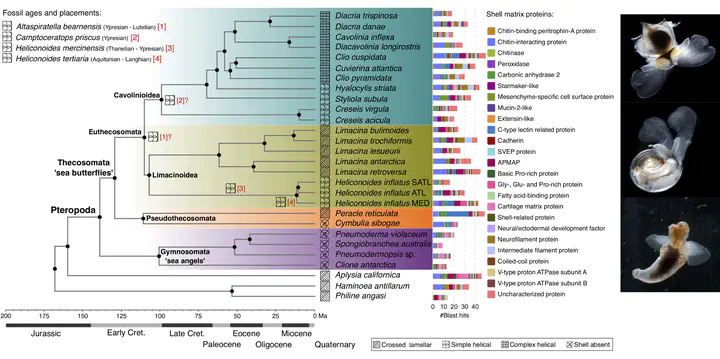Evolution and biomineralization of pteropod shells
Sea butterflies are small gastropods that spend their entire live swimming and drifting in the open oceans. They are widely regarded as bioindicators of ocean acidification because they build thin shells of aragonite, a form of calcium carbonate. Despite thin, pteropod shell walls are very strong and uniquely adapted to withstand different water flows. There are at least three distinct types of shell structures including crossed lamellar - made of straight crystal crossing fibers, simple helical - curved fibers that coil one turn or less, and compex helical - compact curved fibers that coil for more than one turn. These shells are an inspiration for the design of ultrathin and yet strong materials. In our paper Evolution and biomineralization of pteropod shells we review and describe in detail the different pteropod shell structures. Upon this publication we released a promo video in collaboration with Studio de Maan about these amazing shells.
